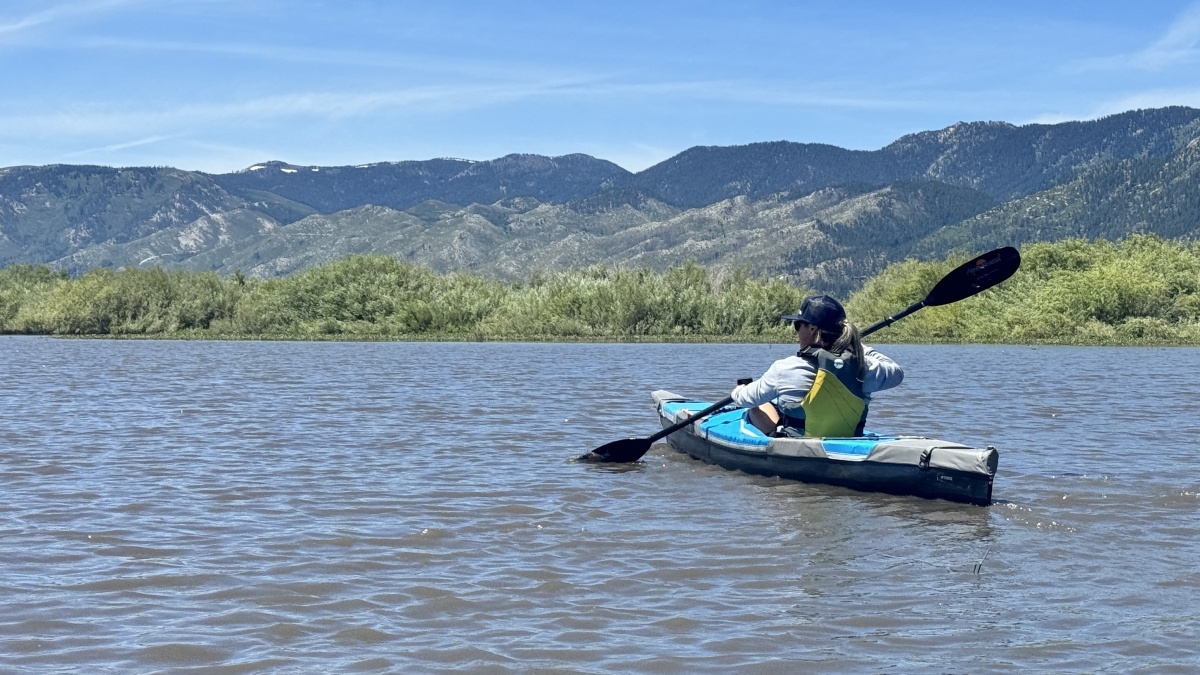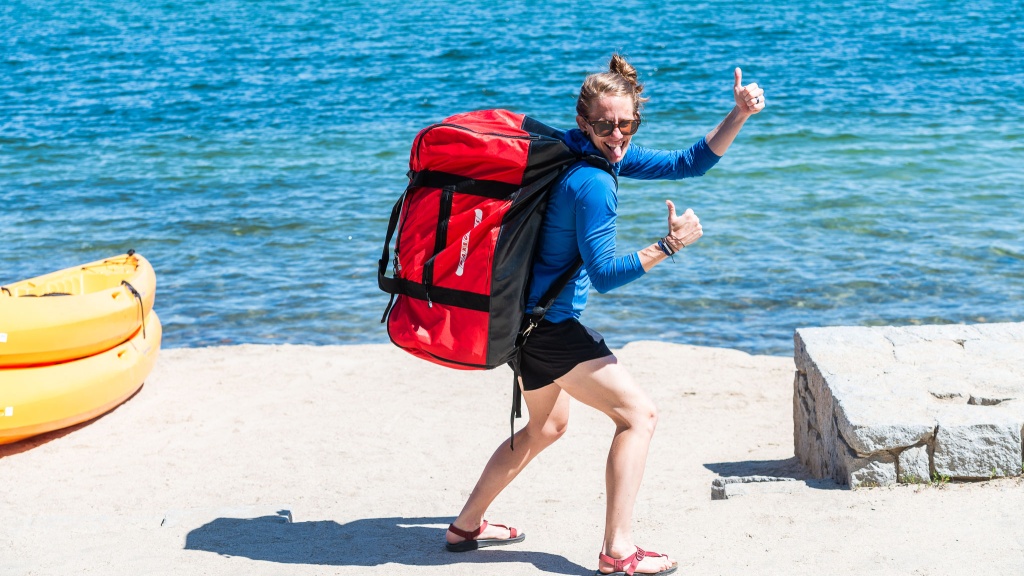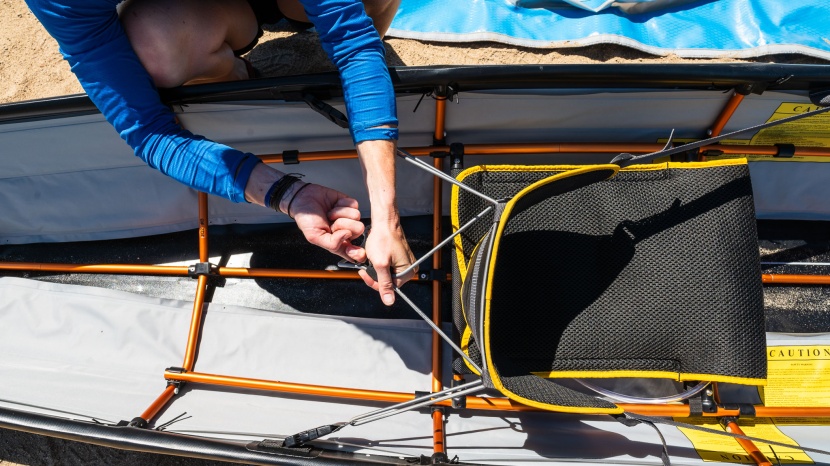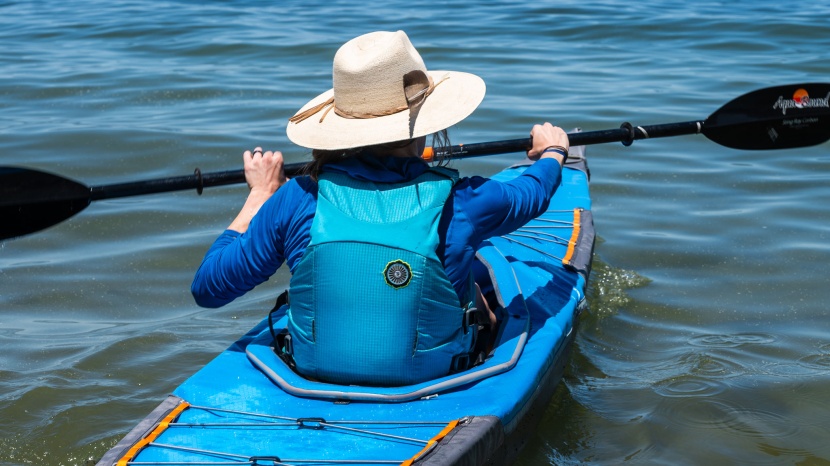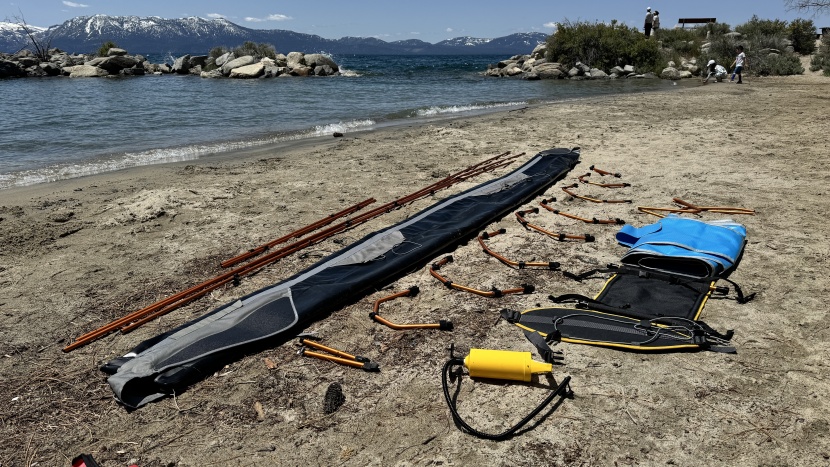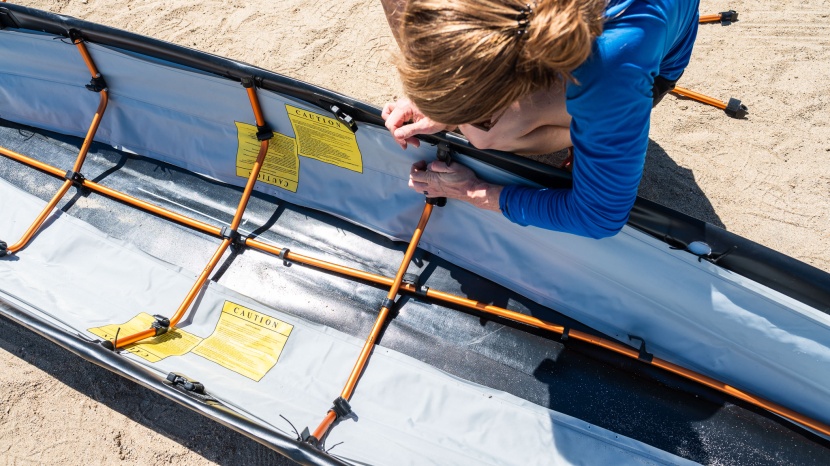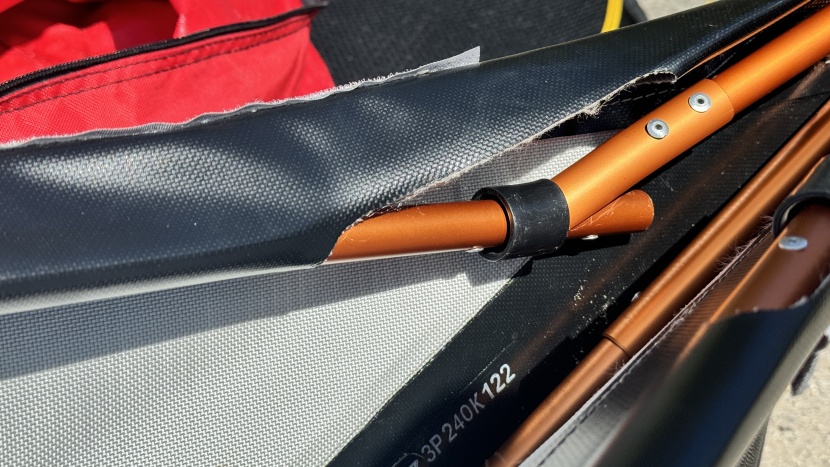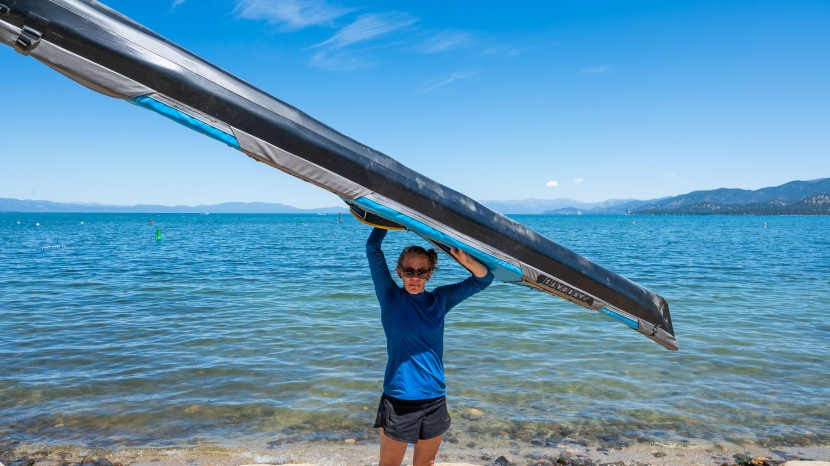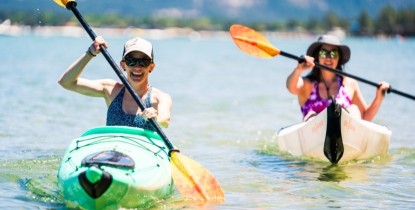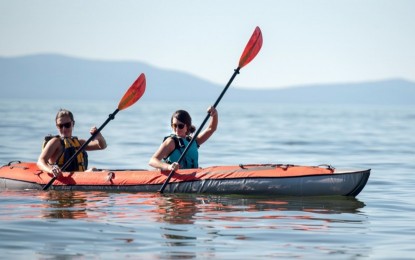
Our Verdict
Our Analysis and Test Results
The Pakboats Quest 150 is a single-person kayak with the design of a sea-faring boat, the ability to be paddled without the deck plate, and a 285-pound capacity. It weighs 35.4 pounds and is comprised of an aluminum frame in pieces, polyurethane-coated synthetic fabric, and inflatable tubes. It can hold a spray skirt, comes with a repair kit, and features backpack straps on the carry bag.
Gliding and Tracking
Even without any skegs or rudder, this 14-foot, 11-inch kayak glides and tracks like an absolute dream. Despite not having rigid sides, the aluminum frame helps this craft paddle like it does. The entire boat is pointed and slices through the water like a hot knife through butter. Every one of our testers felt fast and elegant paddling this boat.
Stability
The Quest looks long and narrow — because it is. At just 2 feet, 1 inch wide, it's one of the narrowest packable boats we've tested.
With a raised seat, this lowers overall stability, particularly when getting in and out of the craft. It is possible to get into a sort of braced position within this kayak, using the aluminum ribs as foot braces and placing your knees under the deck plate.
And with a spray-skirt-friendly cockpit rim, it is technically possible to perform a roll in this boat — if a bit inelegantly due to its unconventional construction and inner configuration.
Comfort
The seat inside the Quest is suspended and lightly padded, making it decently comfortable — though not adjustable. An inflatable section in the front of the seat lets you prop your knees up if you prefer to paddle that way. It has plenty of leg room but not a lot of width for larger paddlers.
While there are plenty of aluminum ribs that could be makeshift footrests, they may or may not be placed in a convenient position for your height. There are no additional features in this boat, and no dry storage — though plenty of space to bring things along under the deck plates (or just around you, if you choose to paddle canoe-style, without the deck plate).
Ease of Transport and Set Up
At 35.4 pounds and with padded backpack straps, getting the Quest to and from your home isn't too bad. Where this boat falls flat, is in its actual setup. We had to request printed directions to be sent with the Quest — it comes with a DVD of instructions, which isn't the most helpful for setting up on a beach or anywhere other than in front of your TV.
Even once we'd gotten the hang of it and were practiced at putting together the many individual components that make up the Quest, in perfect conditions, it took us around 25 minutes. More often, some part of it would slide out of place while we were setting it up, and the whole thing would have to be disassembled to fix it. The poles slip too easily out of their positions in the bow and stern, and the ribs are easy to place on the wrong end of the kayak.
Even when it all goes right, it takes a shocking amount of muscle to wrench all the poles into place and lock them down. And the more times we did this on sandy beaches, the more dust worked its way into the joints, and the harder they became to connect.
Taking it apart is much easier, and water drains out of the open design in seconds. It easily fits back into its carrying case without any issues. However, just like the aluminum pole joints, the plastic clips on the Quest bag got harder and harder to operate as more dust settled into them over our prolonged testing period.
Maneuverability
With such length, a decrease in maneuverability is expected. Navigating a complex wetland was more challenging — partly due to the boat gliding better than it turns and partly due to its exceptional length that just isn't designed for small spaces. Not a kayak that's built to excel through a challenge course, the Quest still turns and maneuvers in flat water just fine.
Construction Quality
The aluminum poles and polyurethane covers that comprise the bulk of the Quest feel durable and sturdy. However, there are a few components that give us pause about their potential longevity. First, there are wide rubber bands that secure the ribs to the keel, which will surely deteriorate over time — especially in dry environments or after prolonged sun exposure.
Second, the plastic clamps that secure the ribs to the sides of the boat continued to get harder and harder to operate the longer we used them. There are many other structurally important pole placement locks made of plastic that have followed a similar trajectory, as well as the plethora of plastic clips holding ribs and poles in place.
Thirdly, the ends of the long poles making up the sides of the boat easily bent during our testing, just from trying to hold their places in the bow and stern posts during setup. In short, the materials that make up the Quest are solid, but their attachment mechanisms have already started to degrade during our several-month testing period.
Should You Buy the Pakboats Quest 150?
We have a hard time recommending this boat in its current iteration. The idea is sound, the boat's on-water performance is excellent, and the materials are sturdy. However, the amount of issues we had setting up the Quest over and over again and seeing it get more and more difficult to accomplish over time makes it hard to justify its price. Perhaps if you're able to store this boat without having to take it apart every time, you can bypass some of these issues. And perhaps if you're willing to put up with these flaws for a boat that you can easily check at the airport and then hop into faraway waters, it's worth it. At this point though, we think most paddlers will be better served by other options.
What Other Inflatable Kayaks Should You Consider?
If you're after the sea kayak shape and paddling experience, the Pakayak Bluefin 142 is our top recommendation. Yes, it's heavy, but it's also very easy to assemble, rolls easily over concrete, and paddles just like its rigid brethren. On the other end of the scale, if you're all about portability and taking your kayak around the world with you, the Advanced Elements PackLite is worth considering. It isn't the most impressive paddling experience, but it weighs just over five pounds and can get you out enjoying the water in calm conditions.
| Awards | |
|---|---|
| Price | $1,795 List |
Overall Score  |
|
| Star Rating | |
| Bottom Line | A lightweight sea kayak you can take on far-flung vacations and paddle confidently, but not a quick and easy option for short adventures around home |
| Pros | Tracks like a dream and glides with ease, compact and with good backpack straps, controllable in rougher waters, can paddle like a canoe without the deck plate |
| Cons | Setup is shockingly challenging and time consuming, no footrests, some components aren't made of the most durable materials |
| Rating Categories | Pakboats Quest 150 |
| Gliding and Tracking (25%) | |
| Stability (20%) | |
| Comfort (20%) | |
| Ease of Transport and Set Up (15%) | |
| Maneuverability (10%) | |
| Construction Quality (10%) | |
| Specifications | Pakboats Quest 150 |
| Measured Weight (boat and storage bag only) | 35.4 lb |
| Capacity | Single; 285 lb |
| Kayak Size (length x width) | 14' 11" x 2' 1" |
| Packed Size (length x width x height) | 29" x 16" x 11" |
| Included Accessories | Repair kit, pump |
| Material/Construction | Aluminum frame, polyurethane-coated synthetic fabric, inflatable tubes |
| Features | Bow and stern bungees, can hold a spray skirt, adjustable backrest, backpack straps on carry bag |


